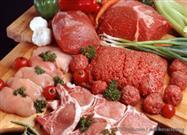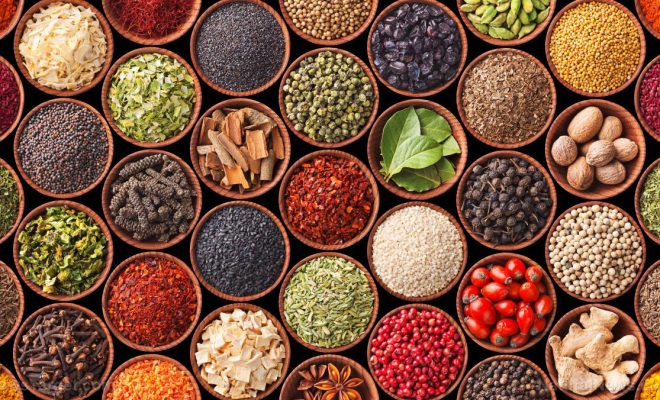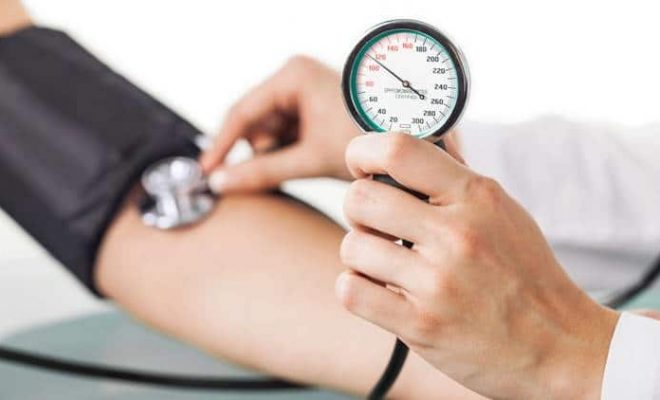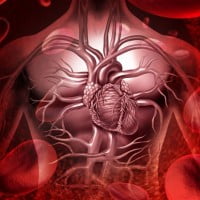Older Americans Need Protein to Keep Muscles Strong

Proteins are found in every cell in your body. These chains of amino acids are important for repair, maintenance and growth of cells, and are essential for healthy muscles, organs, glands, and skin.
As protein is broken down and used up in your body, you must replace it by consuming protein via your diet. There’s no question that eating enough high-quality protein is essential to good health, but in the US most people eat more protein than they need.
According to the U.S. Centers for Disease Control and Prevention (CDC):1
“…most adults in the United States get more than enough protein to meet their needs. It’s rare for someone who is healthy and eating a varied diet to not get enough protein.”
As you get older, however, this isn’t necessarily true. As you age, your muscle mass and strength begins to decline at an accelerating rate, which means your body may need more protein than it did when you were younger.
Your ability to process protein also declines with age, further raising your protein requirements.
Eating Adequate Protein May Help You Maintain Muscle Mass and Strength as You Age
Age-related loss of muscle mass is known as sarcopenia, and if you don’t do anything to stop it you can expect to lose about 15 percent of your muscle mass between your 30s and your 80s.2
Muscle loss happens gradually, so you probably won’t notice it occurring at first. But by the time you’re in your 70s, when sarcopenia tends to accelerate, you might start to feel weaker and find you can’t do things, physically, that you used to do.
Eating enough high-quality protein may help you to counteract some of these declines.
According to research published in the Journal of Nutrition, men who ate at least three ounces of protein a day, and women who ate at least 2.6 ounces per day, had more lean muscle mass. Overall, those with the highest intake of total protein and animal protein had the highest levels of lean muscle mass.3
For comparison, 1 ounce of protein is equivalent to 28 grams. Current dietary guidelines suggest about 46 grams of protein a day for adult women and 56 grams for adult men, which amounts to about 0.8 grams of protein/kg of body weight per day.
Last year, a study published in the journal Clinical Nutrition also recommended higher protein intakes to help counteract the progressive loss of muscle mass and strength in older adults. They noted:4
“… good nutrition, especially adequate protein and energy intake, can help limit and treat age-related declines in muscle mass, strength, and functional abilities. Protein nutrition in combination with exercise is considered optimal for maintaining muscle function.”
The researchers called for increased protein requirements for several at-risk groups, including:
- For healthy older people, the diet should provide at least 1.0–1.2 g protein/kg body weight/day
- For older people who are malnourished or at risk of malnutrition because they have acute or chronic illness, the diet should provide 1.2–1.5 g protein/kg body weight/day
- Even higher protein intake is advised for individuals with severe illness or injury
Increasing Your Intake of Animal Protein May Protect Against Functional Decline
In 2014, research from Japan found that men who consumed higher levels of meat and fish had a 39 percent lower risk of both mental and physical decline compared to those who ate the least animal protein.5
It’s likely, as the researchers suggested, that high-quality protein helps preserve lean muscle that is essential for daily functioning.
Considering that this study was done in Japan, it’s also possible that the participants were consuming higher levels of omega-3 fats from seafood, which may have offered some of the brain-boosting benefits.
In 2012, research also showed that among people aged 70 to 89, those with the highest protein intake reduced their risk of mild cognitive impairment by 21 percent.6
However, as the researchers pointed out, the Japanese study was observational, which means it simply shows a relationship between animal protein and decreased functional decline – it does not show a cause-and-effect relationship.
So it may very well be that the diets of those eating more animal protein were also lower in carbohydrates and, perhaps, higher in healthy fats, than those eating fewer animal proteins.
This is only speculation, of course, but typically when protein is reduced, carbohydrate intake tends to increase, which may be detrimental for your health, especially as you age.
One Study Even Recommended Seniors Nearly Double Their Protein Intake
Still more research, this time published in the American Journal of Physiology Endocrinology and Metabolism, assessed the effects of four eating plans on the muscle health of 20 healthy adults between the ages of 52 and 75.7
The participants were randomly divided into four groups, and assigned to a specific eating plan as follows:
- Groups 1 and 2 ate 0.8 grams of protein per kilogram of body weight per day (current RDA), consumed either all at once during dinner, or divided up equally between three meals
- Groups 3 and 4 ate 1.5 grams of protein per kilogram of body weight (double the current RDA guideline), either for dinner, or divided up equally between three meals
Regardless of the timing or distribution of the protein, after four days those who ate more protein increased their rates of muscle protein synthesis, improving their body’s ability to build muscle. They also improved their net protein balance, which is the difference between protein synthesis and breakdown.
As explained in the featured article:8
“As we age, we naturally lose muscle mass and strength due to a trifecta of reduced muscle response to protein intake, changing hormones and for some, less physical activity. Called sarcopenia, this gradual loss of muscle mass has been credited with a litany of health problems, including insulin resistance, low bone mineral content and density, falls and fractures – even death, says lead author IL-Young Kim …
For maximal muscle, Kim says the majority of older adults need to consume about 1.8 grams of protein per kilogram of body mass per day. Kim recommends getting the bulk of your protein from animal sources such as beef, fish, milk and cheese.”
Translating Ideal Protein Requirements Into Foods
If you were to follow the proposed recommendation in this study, it would suggest an older 170-pound person needs 139 grams of protein a day (1.8 grams of protein per kilo of total body weight). Personally, I believe this is an excessive amount of protein and would recommend against consuming this much, unless you are clearly losing muscle mass. Then I would gradually increase your intake along with strength training until you notice an improvement.
Substantial amounts of protein can be found in meat, fish, eggs, dairy products, legumes, nuts, and seeds. Some vegetables also contain generous amounts of protein—for example, broccoli. Forty grams of protein is not a large amount of food—it’s the equivalent of just two small hamburger patties, or one six-ounce chicken breast.
To determine whether or not you’re getting too much protein, simply calculate your body’s requirement based on your lean body mass, as described above, and write down everything you eat for a few days. Then, calculate the amount of daily protein you’ve consumed from all sources.
Again, you’re aiming for one-half gram of protein per pound of lean body mass. If you’re currently averaging a lot more than what is optimal, adjust downward accordingly. You could use the chart below or simply Google the food you want to know and you will quickly find the grams of protein in that food.
| Red meat, pork, poultry, and seafood average 6-9 grams of protein per ounce.
An ideal amount for most people would be a 3-ounce serving of meat or seafood (not 9- or 12-ounce steaks!), which will provide about 18-27 grams of protein |
Eggs contain about 6-8 grams of protein per egg. So an omelet made from two eggs would give you about 12-16 grams of protein
If you add cheese, you need to calculate that protein in as well (check the label of your cheese) |
| Seeds and nuts contain on average 4-8 grams of protein per quarter cup | Cooked beans average about 7-8 grams per half cup |
| Cooked grains average 5-7 grams per cup | Most vegetables contain about 1-2 grams of protein per ounce |
Too Much Protein Can Be Detrimental to Your Health
As you age, your protein requirement will tend to increase, so there is some validity to the argument that boosting protein intake may improve your health— especially ifyou’re currently eating far below the recommended amounts. That said, there are drawbacks to eating too much protein that you need to consider as well.
There is an upper limit to how much protein your body can actually use. And, on the average, Americans typically consume anywhere from three to five times more protein than they need for optimal health, along with far too many carbohydrates and insufficient amounts of healthy fats.
While your body certainly needs protein, eating too much of it—especially if you’re eating CAFO-raised protein—can actually be detrimental to your health for a number of reasons, including the following:
- If you eat more protein than your body requires, it will simply convert most of those calories to sugar and then fat. Increased blood sugar levels can also feed pathogenic bacteria and yeast, such as Candida albicans (candidiasis), as well as fueling cancer cell growth
- Excessive protein can have a stimulating effect on an important biochemical pathway called the mammalian target of rapamycin (mTOR). This pathway has an important and significant role in many cancers. When you reduce protein to just what your body needs, mTOR remains inhibited, which helps minimize your chances of cancer growth.
- When you consume more protein than your body needs, your body must remove more nitrogen waste products from your blood, which stresses your kidneys.9 Chronic dehydration can result, as was found in a study involving endurance athletes.10
So while it’s important to consume enough protein to maintain muscle mass, protein in and of itself is not a magic solution against age-related muscle loss. You still need strength training to actually build muscle, and if you have cancer, you need to be particularly cautious about stimulating the mTOR pathway with excessive protein.
How Much Protein Do Most Adults Really Need?
How do you know exactly how much protein you actually need? Fortunately, there is a simple rule, and all you need to know is your lean body mass. You likely need about one-half gram of protein per pound of lean body mass. For most people, this amounts to 40 to 70 grams of protein a day.
Rarely does a person need more protein than this—the exception would be those who are aggressively exercising (or competing) and pregnant women, who should have about 25 percent more. Also, if you are older and notice your muscle strength declining, you can gradually increase your protein intake and strength-training until you notice an improvement.
To estimate your protein requirements, first determine your lean body mass. Subtract your percent body fat from 100. For example, if you have 20 percent body fat, then you have 80 percent lean body mass. Just multiply that percentage (in this case, 0.8) by your current weight to get your lean body mass in pounds or kilos.
So, in the above example, if you weighed 160 pounds, 0.8 multiplied by 160 equals 128 pounds of lean body mass. Using the “one-half gram of protein” rule, you would need about 64 grams of protein per day.
Strength Training Is Essential for Preventing Age-Related Muscle Loss
Weight training is important throughout your life, but in many ways it becomes even more important as you age. Even if you’re in your 90s, it’s not too late. One study found a group of nursing home residents with an average age of 90 improved their strength between 167 and 180 percent after just eight weeks of weight training.11 According to the American College of Sports Medicine (ACSM):12
“Given an adequate training stimulus, older adults can make significant gains in strength. A two- to threefold increase in strength can be accomplished in three to four months in fibers recruited during training in older adults. With more prolonged resistance training, even a modest increase in muscle size is possible.
…With increasing muscle strength come increased levels of spontaneous activity in both healthy, independent older adults and very old and frail men and women. Strength training, in addition to its possible effects on insulin action, bone density, energy metabolism, and functional status, is also an important way to increase levels of physical activity in the older adult.”
Strength training also increases your body’s production of growth factors, which are responsible for cellular growth, proliferation, and differentiation. Some of these growth factors also promote the growth, differentiation, and survival of neurons, which helps explain why working your muscles also benefits your brain and helps prevent dementia.
A Strength Training Program That’s Ideal as You Get Older
People of all ages can benefit from super-slow weight training, but this is definitely a method to consider if you’re middle-aged or older. By slowing your movements down, it turns your weight-training session into high-intensity exercise. The super-slow movement allows your muscle, at the microscopic level, to access the maximum number of cross-bridges between the protein filaments that produce movement in the muscle.
This is a beneficial and safe way to incorporate high-intensity exercise into your workouts even if you’re older and have trouble getting around. You only need about 12 to 15 minutes of super-slow strength training once a week to achieve the same human growth hormone (HGH) production as you would from 20 minutes of Peak Fitness sprints, which is why fitness experts like Dr. Doug McGuff are such avid proponents of this technique.
The fact that super-slow weight training gives you an excellent boost in human growth hormone (HGH), otherwise known as the “fitness hormone,” is another reason why it’s so beneficial if you’re older.
I recommend using four or five basic compound movements for your super-slow (high intensity) exercise set. Compound movements are movements that require the coordination of several muscle groups—for example, squats, chest presses, and compound rows. Here is my version of the technique. I also demonstrate a number of exercises in the video above, starting around the 15-minute mark:
- Begin by lifting the weight as slowly and gradually as you can. In the video above, I demonstrate doing this with a four-second positive and a four-second negative, meaning it takes four seconds, or a slow count to four, to bring the weight up, and another four seconds to lower it. (When pushing, stop about 10 to 15 degrees before your limb is fully straightened; smoothly reverse direction)
- Slowly lower the weight back down to the slow count of four
- Repeat until exhaustion, which should be around four to eight reps. Once you reach exhaustion, don’t try to heave or jerk the weight to get one last repetition in. Instead, just keep trying to produce the movement, even if it’s not “going” anywhere, for another five seconds or so. If you’re using the appropriate amount of weight or resistance, you’ll be able to perform eight to 10 reps
- Immediately switch to the next exercise for the next target muscle group, and repeat the first three steps
What Types of Protein Are Best?
The type of protein you eat matters just as much as the amount. Substantial amounts of protein can be found in meat, fish, eggs, dairy products, legumes, nuts, and seeds. Some vegetables also contain generous amounts of protein—for example, broccoli. Whey protein is a particularly good source of protein to consume after exercise because it contains not only high-quality protein, but also extremely high amounts of leucine, which is particularly important for muscle growth and repair.
One of the reasons whey protein is so effective for exercise recovery is that it assimilates very quickly—it gets into your muscles within 10-15 minutes of swallowing it, just when they need it most.
Whey is also excellent for your immune system, as it is rich in immunoglobulins, lactoferrin, and other precursors for glutathione. Overall, I recommend consuming a wide variety of high-quality proteins from both animal and plant whole food sources. Research consistently shows that nutritional deficits are extremely hard to avoid if you limit yourself to a strictly plant-based diet.
From the standpoint of ancestral nutrition, the hunting and foraging of our predecessors resulted in their consuming a much wider selection of foods than we do today, which means they received a much broader complement of nutrients, including proteins.
Examples of high-quality protein include whey protein concentrate from grass-fed cows, organic grass-fed beef, pastured organic eggs and chicken, and wild-caught salmon. For a comprehensive guide, please refer to my Optimized Nutrition Plan, starting with Beginner Plan: Protein, and then progressing into Intermediate Plan: Protein. In addition, the foods that follow also have an exceptional protein value and make a good regular addition to your diet:
- Hemp seeds (hemp hearts): About 33 percent protein, providing 11 grams per three tablespoons; also contain all 20 amino acids in an easily digestible form and are loaded with plant-based omega-3 fats13
- Chia seeds: About 14 percent protein, providing about four grams per three tablespoons;14 also high in plant-based omega-3 fats
- Spirulina: Seventy percent protein by weight, six grams of protein per 10 gram serving, contains 18 of the amino acids and all of the essentials, and is easily assimilated (avoid spirulina if you’re allergic to iodine or seafood)
- Sprouts: The quality of the protein and the fiber content of beans, nuts, seeds, and grains improve when sprouted; sunflower sprouts provide some of the highest quality protein you can eat, along with abundant iron and chlorophyll; kamut, hemp, quinoa, and bean sprouts are also good sources
- Bee pollen: Forty percent protein and one of nature’s most complete foods; you generally wouldn’t eat a large amount of bee pollen at any one time, but it’s an excellent addition for variety








